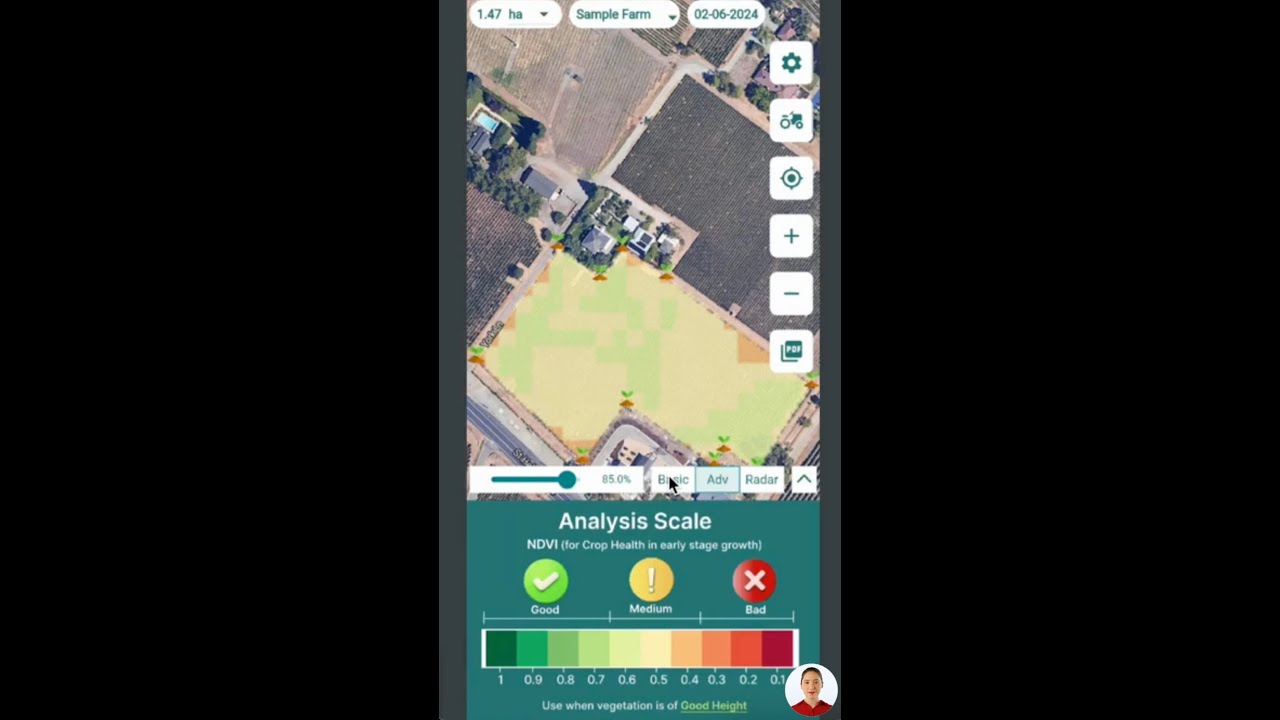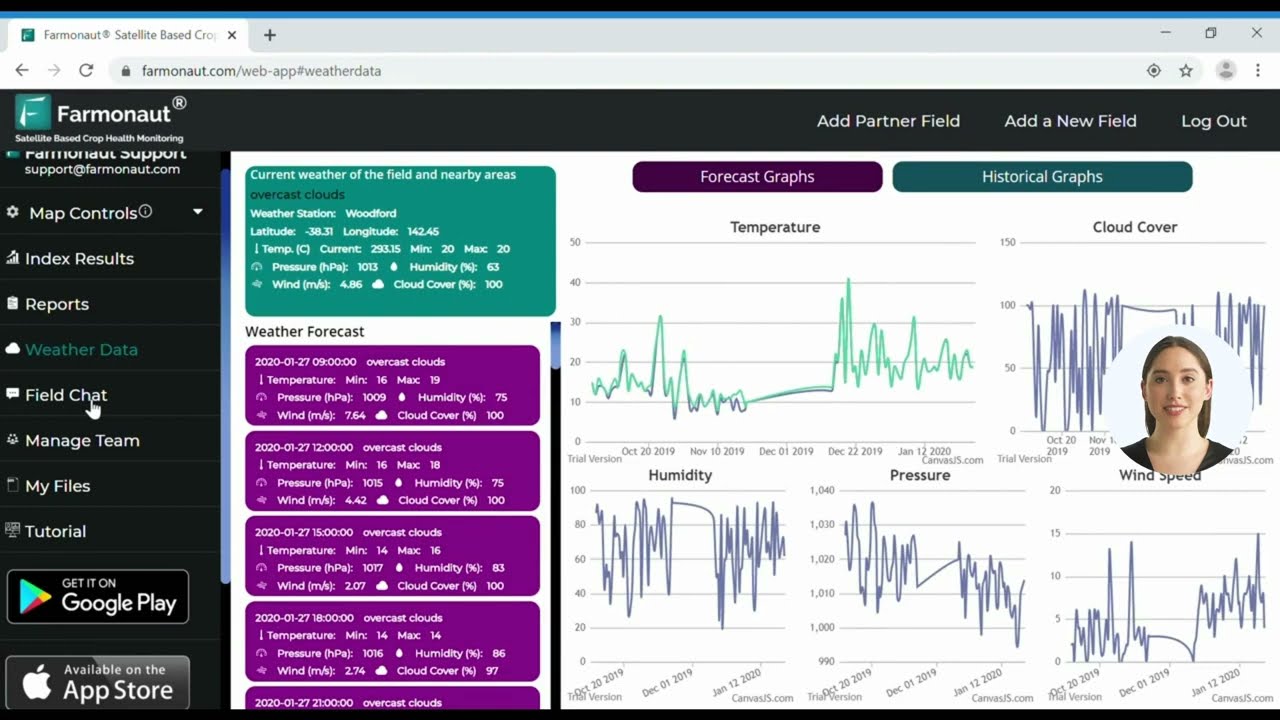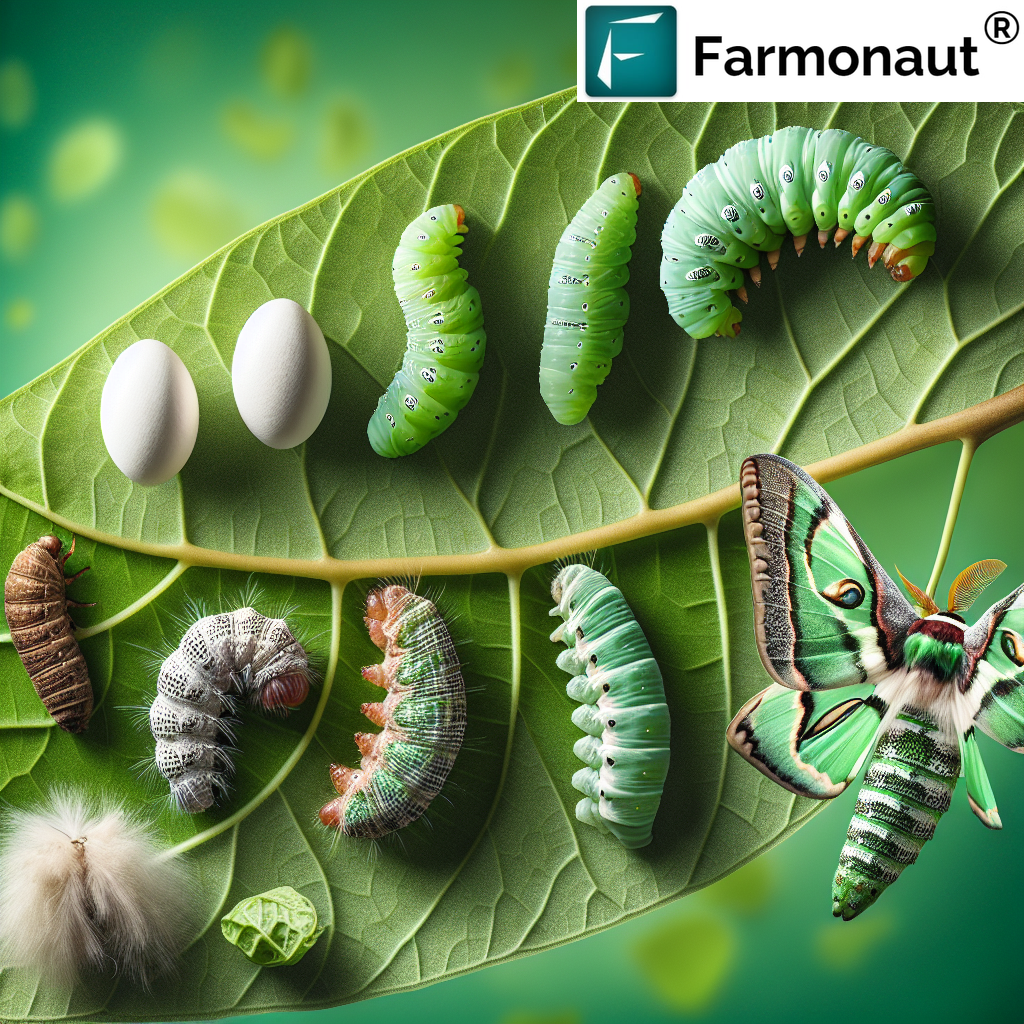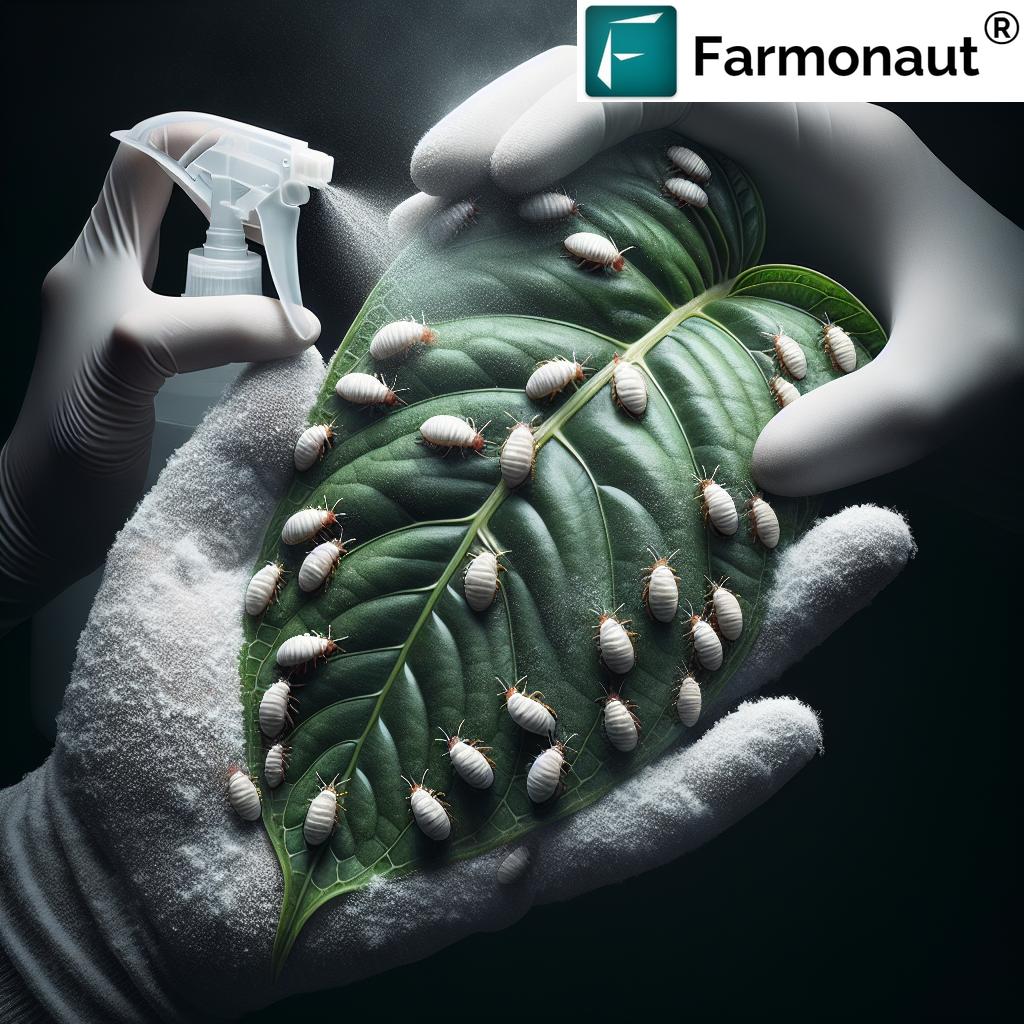Lemon Tree Diseases and Treatment: Top 10 Solutions
“Up to 40% of lemon tree yield can be lost annually due to untreated fungal diseases.”
Introduction: Why Lemon Tree Disease Management Matters
Lemon tree cultivation stands as a pillar of commercial and backyard horticulture, ensuring a steady supply of citrus fruits packed with nutrition and flavor. While lemon trees are hardy and adaptable, they remain susceptible to a wide variety of diseases. Fungal, bacterial, and viral pathogens—along with physiological stresses—can threaten tree health, productivity, and even plantation survival.
Unmanaged, these diseases can lead to significant yield loss, premature leaf drop, and reduced fruit quality. That’s why understanding lemon tree diseases—their symptoms, management strategies, and fungicide application—is essential for all growers.
This comprehensive guide presents an overview of the top 10 lemon tree diseases, their causes, symptoms, and effective treatment methods. Armed with this knowledge, growers can prevent the spread of diseases and protect their lemon orchards from loss.
Common Lemon Tree Diseases, Symptoms, and Solutions
To simplify disease management decisions, the following table summarizes the top lemon tree diseases, their symptoms, estimated yield loss, and actionable management tips. This table helps growers quickly identify issues, assess risks, and take preventative or curative action.
| Disease Name | Symptoms | Estimated Yield Loss (%) | Recommended Treatment | Fungicide Used | Management Tips |
|---|---|---|---|---|---|
| Citrus Canker | Raised brown lesions with yellow halos, leaf and fruit drop, shoot dieback | 15–30 | Remove infected trees, strict sanitation, quarantine measures | No | Prune out infected parts and destroy, avoid water splash |
| Phytophthora Root Rot | Gummosis at tree base, dark lesions, cracked bark, yellowing canopy | 10–25 | Plant in sandy, well-draining soils, apply copper fungicides | Yes | Elevate root ball above soil, use raised beds in heavy soils, prune infected branches |
| Mal Secco | Chlorosis, leaf epinasty, twig dieback, pinkish wood discoloration | 10–20 | Use resistant varieties, remove infected wood | No | Select resistant types, remove and burn affected branches |
| Greasy Spot Fungus | Yellow-brown leaf blisters, premature leaf drop | 8–12 | Apply copper fungicides during mid-summer | Yes | Repeat sprays as prevention during season, especially before symptoms |
| Sooty Mold | Black coating on leaves, reduced growth, premature leaf drop | 5–10 | Control pests (aphids, scales), wash mold from foliage | No | Improve air circulation, wash leaves, use insecticides against pests |
| Citrus Black Spot | Dark sunken lesions on fruit and leaves, fruit drop | 10–30 | Remove infected trees, apply fungicides (copper, strobilurins) | Yes | Monthly fungicide application from May–September, vigilant orchard monitoring |
| Tristeza | Light green foliage, stunted growth, leaf drop, trunk pitting | 5–25 | Quarantine, prevent entry and spread | No | Monitor new plantings, use virus-free stock, destroy infected trees |
| Citrus Leafminer | Silvery trails on curled leaves, stunted young growth | 5–15 | Horticultural oil sprays on new flush | No | Apply oil at timely intervals, focus on young trees |
| Root Rots & Trunk Cankers | Poor growth, trunk lesions, oozing sap, tree girdling | 10–28 | Plant in well-drained soil, copper fungicides, remove infected parts | Yes | Raise root ball, avoid overwatering, timely fungicide application |
| Citrus Scab | Round scaly lesions on leaves/fruit, pink to brown, then gray | 5–10 | Apply copper fungicides as per schedule | Yes | Spray at early leaf and post-flowering stage, repeat as needed |
“Over 70% of leaf drop cases in lemon trees are linked to bacterial and fungal infections.”
1. Citrus Canker: Symptoms, Causes, and Solutions
Focus Keyword: Citrus Canker Symptoms & Management
Causal Agent: Xanthomonas citri is the bacterium responsible.
Symptoms: Citrus canker manifests as raised, brown lesions with distinct yellow halos found on leaves, stems, and fruit. As the disease advances, severe cases can result in defoliation, shoot dieback, premature fruit drop, and even significant yield loss.
- Lesions may become corky and surrounded by water-soaked margins.
- Leaves and fruit are often most affected by canker in wet, rainy seasons.
Management: There is currently no cure for citrus canker. Preventative measures are essential and include:
- Quarantining new plants to prevent introduction of the disease.
- Immediate removal and destruction of infected trees and plant material.
- Practicing strict sanitation protocols: Regularly disinfect tools and avoid working with wet plants to prevent spread.
- Avoid overhead irrigation that can spread the pathogen by splashing water.
Yield Impact: Canker can cause yield loss of up to 30%, particularly in humid, subtropical regions where the pathogen thrives.
Learn more about Citrus Canker
2. Phytophthora Root Rot: Preventing Citrus Root Rot
Focus Keyword: Preventing Citrus Root Rot
Causal Agent: Caused by several Phytophthora species
Symptoms: Phytophthora root rot leads to gummosis—lesions around the base of the tree that exude sap. Look for dark, longitudinal lesions at the soil line. The phytophthora pathogen produces a distinctive sour smell in infected tissues and causes cracking and damage to bark.
- Early stages: Yellowing and necrosis in the tree canopy and poor growth.
- Advanced stages: Lesion girdling and death of the tree if not managed.
Management:
- Always plant lemon trees in well-draining, sandy soils.
- Ensure root ball is planted 1 inch above soil surface.
- In regions with heavy soils, use raised beds to improve drainage and minimize water stagnation.
- Apply copper-based fungicides before the start of the rainy season as a preventive measure.
- Prune out infected branches and remove dead twigs.
Yield Impact: Estimated loss of 10–25% if management is delayed or ineffective.
More on Preventing Citrus Root Rot
3. Mal Secco: How to Treat Mal Secco in Lemons
Focus Keyword: How to Treat Mal Secco in Lemons
Causal Agent: Phoma tracheiphila
Symptoms: Mal secco first shows up as chlorosis (yellowing) of young leaves and epinasty (downward bending of leaf petioles). This is followed by rapid wilt and dieback of leaves, twigs, and branches.
- The wood under the bark often develops a salmon, pink, or red coloration—a key mal secco indicator.
- Gum exudation may be observed in affected areas.
Management:
- Implementing resistant lemon varieties is the most effective control strategy.
- Promptly remove and destroy infected plant material to reduce spread of the pathogen.
- Ensure trees are not stressed, as wounding or drought can heighten susceptibility.
Yield Impact: Can lead to 10–20% crop loss if not controlled.
4. Greasy Spot Fungus: Identification and Control
Focus Keyword: Greasy Spot Fungus Management
Causal Agent: Mycosphaerella citri
Symptoms: Notice yellow-brown blisters on the underside of leaves. Over time, these areas darken, and the cuticle becomes oily—thus the “greasy spot” name. Premature leaf drop and a weakened tree are common results.
- Early symptoms may go unnoticed but drive significant defoliation and fruit reduction in later stages.
Management:
- Apply copper fungicides in June/July and again in August/September as a preventative measure, even if symptoms are not visible.
- Rake and destroy fallen leaves to limit spore spread.
- Ensure good air movement and sunlight penetration in dense canopies by timely pruning.
Yield Impact: Typically 8–12% reduction in productivity, but can exceed this in humid climates.
Guide to Lemon Tree Diseases & Greasy Spot
5. Sooty Mold on Lemon Trees: Causes and Control
Focus Keyword: Sooty Mold on Lemon Trees
Causal Agents: Fungi such as Capnodium, Fumago, and Scorias
Symptoms: Sooty mold is not a direct plant pathogen but grows on the honeydew secreted by sap-sucking insects like aphids, scales, and mealybugs. This forms a black mold layer over foliage.
- Covers leaves, stems, and sometimes fruit with a soot-like film.
- Reduces photosynthesis and can cause stunted growth and premature leaf drop.
Management:
- Control insect pests with suitable insecticides and biological agents.
- Once pest pressure is reduced, wash sooty mold off leaves using water (add mild soap if needed).
- Check for pest re-infestation regularly to avoid repeat outbreaks.
Yield Impact: Sooty mold’s direct damage is mild (5–10%), but can be much more if insect infestation is heavy.
Understand Sooty Mold on Lemons
6. Citrus Black Spot: Symptoms, Yield Loss, and Solutions
Focus Keyword: Citrus Black Spot Management
Causal Agent: Phyllosticta citricarpa
Symptoms: Citrus black spot is a major threat, primarily affecting fruit. Identified by dark, sunken lesions that sometimes have a yellow or red rim. Lesions may crack, and flasks may contain a small mass of fungal spores.
- Fruit with severe lesions may be unmarketable and drop before maturation.
- Leaves can show black spot lesions in severe situations.
Management:
- No known resistance, so removing infected trees is often the only option.
- Citrus black spot management relies on monthly fungicide application (copper, strobilurins) from early May to mid-September.
- Collect and destroy infected fruit and fallen debris.
Yield Impact: Losses can reach 10–30% if management strategies are not applied rigorously.
7. Citrus Tristeza Disease: Signs and Management
Focus Keyword: Signs of Citrus Tristeza Disease
Causal Agent: Citrus tristeza virus (CTV)
Symptoms: Classic signs of citrus tristeza disease include light green foliage, poor new growth, premature leaf drop, and a stunted, bushy tree appearance with chlorotic leaves. Brittle twigs and elongated pits in the trunk or branches (rope-like wood) are also typical.
- Some strains are more severe, leading to rapid decline and tree collapse.
Management:
- Quarantine is critical. Never bring infected stock or plant material into new orchards.
- Remove and safely dispose of infected trees.
- When replanting, use certified virus-free stock.
- Continuous monitoring is needed, as the disease is spread by aphids.
Yield Impact: Up to 25% fruit loss in advanced cases.
Identifying Citrus Tristeza Virus
8. Citrus Leafminer: Management Strategies
Focus Keyword: Citrus Leafminer, Leaf Miner Damage
Causal Agent: Phyllocnistis citrella
Symptoms: Citrus leafminer larvae tunnel between the surfaces of young leaves, creating silvery trails and causing leaf curling. Severe infestations result in stunted growth of young trees, which can reduce long-term productivity.
- Damage is most severe in the first 2–3 years of a tree’s life.
- Older trees suffer minimal yield loss unless stressed or repeatedly attacked.
Management:
- Apply horticultural oil (½–1% solution) on new growth (when flush is ½–1 inch long).
- Spray at 2–3 week intervals when leaf miner activity is detected.
- Strong, healthy trees over 3 years old usually tolerate leaf miner without intervention.
Yield Impact: 5–15% in young plantations if infestations are unmanaged.
9. Root Rots and Trunk Cankers: Causes, Symptoms, and Management
Focus Keyword: Root Rot, Trunk Cankers in Lemons
Causal Agents: Various Phytophthora species
Symptoms: Root rot and trunk cankers often present as poor growth, trunk lesions, oozing sap around the base of the tree, and eventual girdling, which can kill the tree.
- With advanced infection, the entire foliage may yellow and trees may suddenly collapse.
Management:
- As for other phytophthora diseases, plant in well-draining, sandy soils and raise the root ball by 1 inch.
- In heavy soils, use raised beds for proper drainage.
- Apply copper-based fungicides before the rainy seasons.
- Prune out infected branches and promptly remove them from the orchard.
Yield Impact: Depending on severity and tree age, yield loss can range up to 28%.
Managing Trunk Cankers in Lemon Trees
10. Citrus Scab: Symptoms and Citrus Scab Treatment Methods
Focus Keyword: Citrus Scab Treatment Methods
Causal Agent: Elsinoe fawcettii
Symptoms: Citrus scab appears as round, scaly lesions—beginning pinkish, then turning brown, and finally becoming dark gray—on young leaves, stems, and fruit.
- Lesions often cluster and merge, creating rough or distorted fruit surfaces.
- Infected leaves may become misshapen and drop prematurely.
Management:
- Begin copper fungicide applications when the first spring leaves appear.
- Second spray when flower petals fall, then a third at least 3 weeks later.
- Strictly follow label directions and recommended spray schedules for best results.
Yield Impact: While often cosmetic, severe scab can impact 5–10% of fruit marketability.
About Lemon Tree Scab Problems
Proven Best Practices for Managing Lemon Tree Diseases
Comprehensive disease management requires a blend of cultural, chemical, and biological strategies:
-
Culture and Sanitation
- Always select resistant varieties when possible (especially for mal secco and tristeza prone areas).
- Sanitize tools after each use, especially pruning equipment.
- Practice regular pruning to improve air movement and light in the canopy.
- Remove and destroy infected leaves, branches, or fallen fruit.
-
Chemical Control
- Use fungicide applications for greasy spot, scab, citrus black spot, and root rots. Schedule pre-emptive sprays, especially during the rainy season. Always rotate active ingredients and follow label safety instructions.
- When using copper fungicides, avoid spraying during bloom to minimize injury to flowers and pollinators.
-
Insect Control
- Monitor and manage aphids, scales, and leaf miners to prevent secondary diseases like sooty mold.
- Apply horticultural oils as per guidelines, especially during periods of new flush, to minimize pest and disease risk.
-
Irrigation & Planting Practices
- Always plant in well-draining, sandy soils. For heavy soils, raised beds greatly improve drainage.
- Ensure root ball is 1 inch above surface at planting.
- Avoid overwatering—excess moisture promotes phytophthora and root rot pathogens.
-
Early Detection and Monitoring
- Regularly scout orchards for symptoms: lesions, spotting, mold, leaf curl, and fruit drop.
- Promptly isolate or remove infected trees to limit spread.
How Farmonaut Supports Effective Disease Monitoring
At Farmonaut, we understand that lemon tree diseases demand early assessment and precision management. Our platform leverages satellite-based crop health monitoring to alert farmers about changes in vegetation health, soil moisture, and other critical variables that often precede disease outbreaks. This approach empowers growers to:
- Detect early stress symptoms—including those caused by pathogens—
using advanced NDVI, moisture stress indices, and thermal imaging before visible disease symptoms arise. - Optimize fungicide application for citrus trees by identifying areas at highest risk or showing subtle decline, reducing waste and improving effectiveness.
- Receive AI-based pest and disease management advisories through our Jeevn AI Advisory System, which delivers actionable, real-time alerts and tailored solutions.
- Monitor carbon footprint and sustainability using our Carbon Footprinting tools—critical if you’re targeting eco-friendly production methods.
- Enhance transparency in the citrus supply chain with blockchain-based Product Traceability, providing partners and consumers with confidence in product origin and handling.
- For large-scale growers or those managing plantations with diverse plots, our Large Scale Farm Management App streamlines disease monitoring, notification, and farm logistics across hundreds of fields.
- For developers or agribusinesses, our Satellite and Weather API and the API documentation allow seamless integration with your systems for custom crop monitoring and alerts.
Our mission is to make precision agriculture affordable and accessible to all—because early intervention and data-driven decision-making are keys to successful lemon tree disease management.
FAQ: Lemon Tree Diseases & Treatments
Q1: What are the most common symptoms of lemon tree diseases?
A: Common symptoms include raised lesions, yellowing or dropping leaves, black moldy coatings, brown or dark sunken spots, abnormal leaf curl, shoot dieback, gummosis, exuding sap from the trunk, and poor tree growth.
Q2: How can I prevent the spread of major lemon tree diseases in my orchard?
A: Preventative measures include using certified disease-free planting stock, implementing strict tool and equipment sanitization, quarantining new plants, removing infected trees, timely application of fungicides, and regular orchard monitoring—preferably aided by digital satellite monitoring platforms like Farmonaut.
Q3: When and how should I apply fungicides to my lemon trees?
A: Apply preventive copper-based fungicide sprays before wet/rainy seasons, at times recommended on product labels, and whenever initial disease symptoms are detected. Do not spray during flower bloom to avoid harming pollinators and always rotate fungicide types to prevent resistance.
Q4: Are there any lemon disease-resistant varieties, and should I plant them?
A: Yes. Some lime and lemon varieties are bred for resistance to mal secco, tristeza, or certain fungal pathogens. Planting resistant varieties is particularly important in regions with a known history of these diseases.
Q5: Can Farmonaut’s monitoring reveal diseases before they become visually apparent?
A: Yes. Our satellite imaging and AI advisory identify subtle stress signs that often precede visible disease outbreaks, such as changes in vegetation indices or canopy vigor, thereby enabling pre-emptive action.
Q6: What is the best treatment for sooty mold on lemon trees?
A: Managing sap-sucking insect pests (such as aphids and scales) is essential. Once pests are controlled, sooty mold can generally be washed off the foliage using water, sometimes incorporating a mild soap solution.
Conclusion: Towards Successful Lemon Cultivation
Effective management of lemon tree diseases is crucial to sustaining tree health and optimizing long-term productivity. By recognizing symptoms early, following best practices for orchard sanitation, and leveraging advanced disease detection technologies, growers can limit yield loss and safeguard their investment.
Farmonaut enables modern growers to adopt precision, data-driven solutions that enhance traditional disease management. Our tools are designed for scalability, whether you’re a smallholder or a large agribusiness, allowing the citrus sector to thrive even in the face of challenging biotic stressors.
Remember: Early diagnosis, integrated management, and technology adoption are the cornerstones of successful lemon cultivation—from the first planted tree to the final harvested fruit.
Farmonaut Subscriptions and Contact
To explore Farmonaut’s satellite farm monitoring, disease advisory, and advanced agritech solutions, start by choosing the subscription option best suited to your needs:
For further information, download and experience our solutions via the Farmonaut Apps (Web, Android, iOS), or API.
Explore additional features like Carbon Footprinting, Product Traceability, and more for a sustainable, transparent, and profitable citrus business.
Empower your lemon trees—empower your orchard. With Farmonaut, the future of agriculture is in your hands.






















